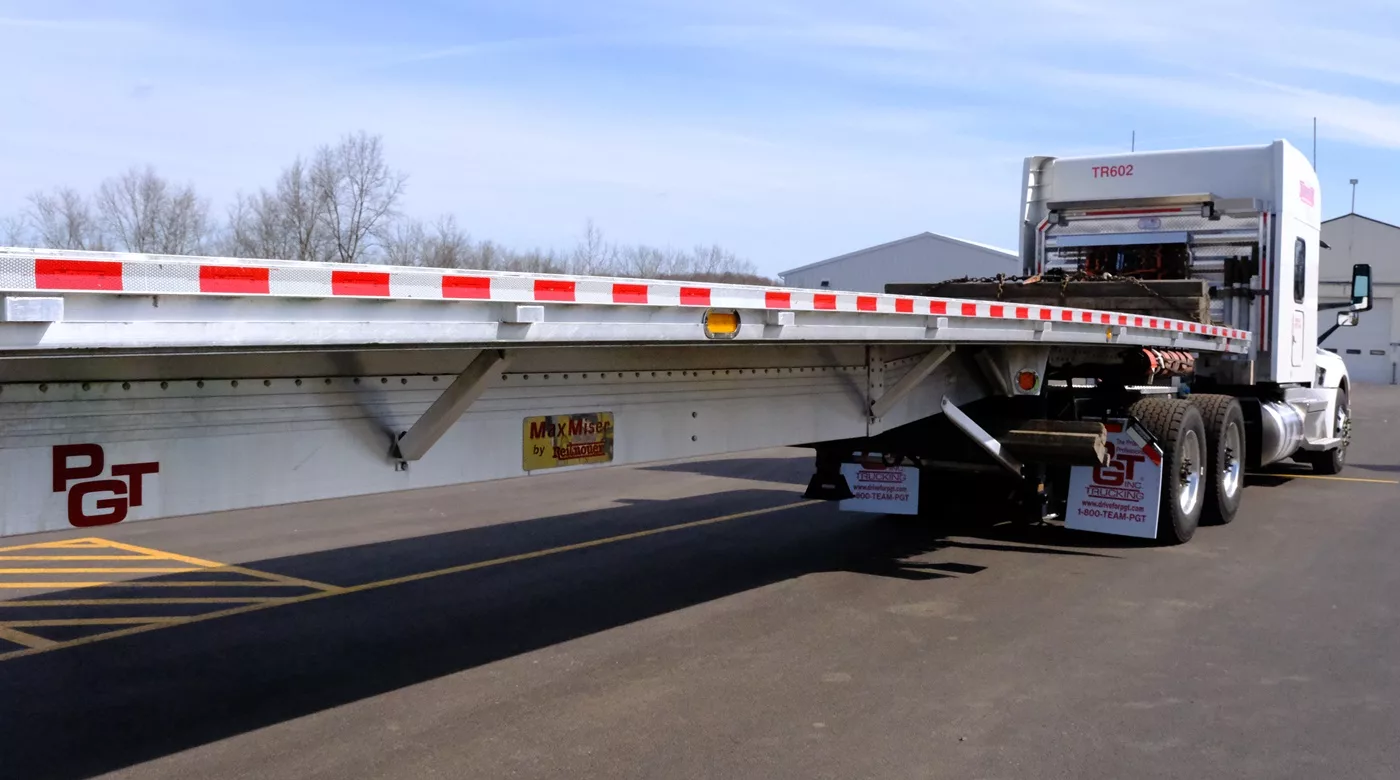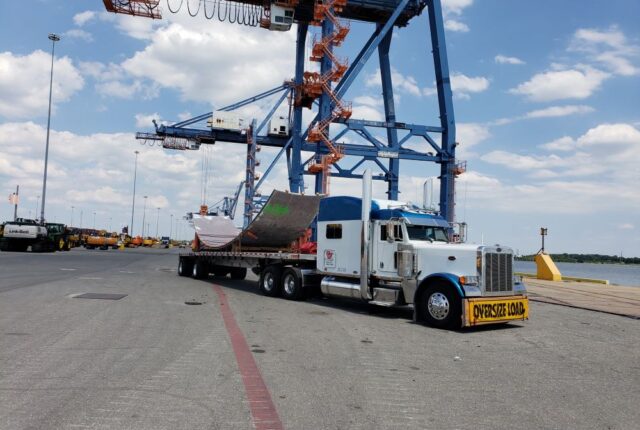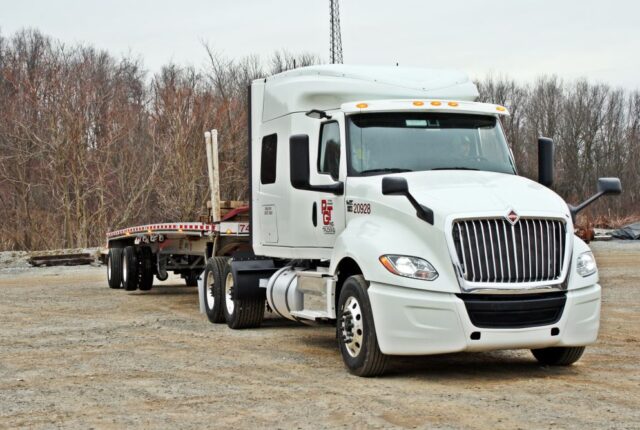
Flatbed Trucking Basics: Everything You Need to Know
At PGT Trucking, we specialize in flatbed transportation, supporting the steel, building materials, machinery, oil & gas, raw materials, aluminum, and automotive industries. The flatbed trucking market is valued at $19 billion, and industry demand remains high, with the current national load-to-truck flatbed ratio averaging 15.68 loads per truck compared to 2.02 loads per truck in the dry van segment. As the U.S. heads into spring, flatbed trucking carriers expect a seasonal upswing, hauling building materials, agricultural equipment, landscaping supplies and more. Flatbed trucks are a vital component of the U.S. supply chain, so let’s review the basics, giving you everything you need to know for a job in flatbed trucking.
What is flatbed trucking?
Flatbed trucking involves hauling an open deck trailer, a “flatbed,” that doesn’t have any walls like a dry van or box trailer. The open deck allows cargo to be loaded from different angles using a forklift or crane, making flatbed trailers ideal for transporting large, bulky commodities. A distinctive factor of flatbed trucking is load securement. Because the cargo is placed on an open deck, the load must be secured to the flatbed trailer to keep the commodity from moving during transit. Flatbed truck drivers must physically secure their loads on top of the trailer, lifting heavy chains, tarps and other equipment. It’s a physical job that involves more than just driving a truck!
Typical flatbed commodities:
- Steel coils, plates or sheets
- Wallboard and paper rolls
- Pipe
- Lumber
- Mill rolls and ingots
- Structural rails and beams
- Prefabricated concrete
- Mulch, shingles and super sacks
- Machinery
Flatbed trailer types:
- Flatbed: Open deck trailer with a length of 48’ or 53’ with a height of 5’.
- Step deck: Open deck trailer with a bottom and top deck, used for hauling cargo that cannot fit on a standard flatbed trailer due to height restrictions. The bottom deck is lower to the ground than a standard flatbed trailer.
- Removable gooseneck (RGN): Open deck trailer with a detachable front, creating a ramp to help the loading process. RGN trailers are designed to transport tall and/or long commodities.
- Conestoga: Specialized flatbed trailer with a rectangular outer shell/tarp that folds up during the loading process like an accordion. When the Conestoga trailer is closed, the cargo is protected from the elements without the need for additional tarps.
- Side kit: Trailer with side panels made of wood/fiberglass and a circular shell/tarp on top, typically used for cargo that isn’t prepackaged.
What is load securement?
Proper load securement is one of the main tasks for a flatbed truck driver. The Federal Motor Carrier Safety Administration (FMCSA) sets cargo securement rules for all cargo-carrying commercial motor vehicles operating in interstate commerce. These regulations are in place in prevent any cargo from shifting or falling off the trailer, keeping our highways safe for truck drivers and other motorists.
Once a flatbed trailer is loaded with the commodity, it is the truck driver’s responsibility to properly secure the cargo. The commodity’s type, weight, length, loading position and size all factor into determining the proper securement method, including the number of securement devices that will be legally required by the FMCSA. PGT’s company policy adds one extra securement device beyond the number required by FMCSA as a part of our commitment to safety.
Securement Equipment:
- Beveled lumber/dunnage
- Trip block
- Coil racks
- Chains
- Ratchet binders
- Edge protectors (metal and plastic)
- Rubber belting
- Rubber bungees (bungees are NOT used to secure equipment or cargo)
- Steel tarps
- Straps
- J-Hooks
Flatbed truck drivers use chains, binders and straps to tie down the commodity, and extra dunnage and trip blocks can be used to prevent forward movement. Once the load is secured, the flatbed truck driver must then tarp the load, protecting the cargo from weather and debris (depending on the commodity type and client instructions). Steel tarps can weigh 65lbs or more, and flatbed truck drivers must be able to lift, carry and maneuver these tarps. Tarping is one of the most physically taxing jobs for a flatbed truck driver, but they take pride in doing their job well!
Once the load is secured, the flatbed truck driver can head out, starting the drive to make a safe and timely delivery. But the job isn’t done yet! The load’s securement must be routinely checked along the way to ensure that nothing has shifted and chains and straps are still tight.
Load Securement Checks:
- Within the first 50 miles or 1 hour, whichever comes first
- Every 150 miles or 3 hours thereafter, whichever comes first
- At every change of duty status
- Immediately after a hard brake or evasive maneuver
What makes a great flatbed truck driver?
Safety! Flatbed truck drivers are committed to safety by keeping their loads secured, driving defensively and following all guidelines, rules and regulations for safe operations. These truck drivers are dedicated, working outside in extreme heat or cold, rain or shine, all day long. They take precautions to protect themselves and those around them, ensuring that everyone can get home safely to their families. Flatbed truck drivers are patient. They navigate through construction zones, heavy traffic and distracted drivers, all while staying calm behind the wheel.
Flatbed truck drivers are meticulous, paying close attention to every detail while effectively communicating with their support teams. They are natural problem solvers, ready to work through any situation that comes their way.
Above all, flatbed trucking is physical. These drivers must be able to climb up and down the trailer multiple times, throw chains, lift tarps and safely maneuver around the cargo. Successful flatbed truck drivers love the action!
Does flatbed trucking pay more?
Yes! Flatbed trucking is a specialized field, and flatbed truck drivers can expect a higher pay rate than dry van truck drivers, earning an average of $13,000 more annually. At PGT, our drivers are paid a percentage of the line haul, and our Company Drivers averaged an annual gross of $68,000-$100,000 in 2022. Because a flatbed truck can be used for a variety of end markets, there is a high demand for these talented truck drivers, and there is plenty of freight all year long.
How to do I apply to PGT Trucking?
Right here! PGT’s job application process is easy – our team of experienced Recruiters are standing by to help you become the next Proud Professional. We’ll give you the resources, support and training in order to make you a successful flatbed truck driver at PGT, named one of the 2023 Top 20 Best Fleets to Drive For®. We have late model equipment, including brand new 2023 International and Peterbilt tractors, and an in-house maintenance program to keep your equipment running in optimal condition.
PGT Company Driver Benefits:
- Up to 28% of line haul revenue
- Orientation and training pay
- Transitional pay – guaranteed minimum for the first 8 weeks
- Medical, dental, vision insurance
- Holiday and vacation pay
- Company-paid life insurance
- 401(k) with 100% match (up to 5% of gross pay)
- Launch retention bonus, loyalty bonus and referral bonus
- And more!
Step up to the challenge and apply today!
Author
csvetahorRelated posts
When to transition to an owner-operator
Considering a career as an owner-operator/independent contractor? With the ever
Flatbed Trucking Jobs – A Guide for Truckers
With the national truck driver shortage, the demand for truck drivers is at an a
Million Mile Driver Spotlight #8
PGT Trucking introduces our new Million Mile Drivers this year, celebrating thei




